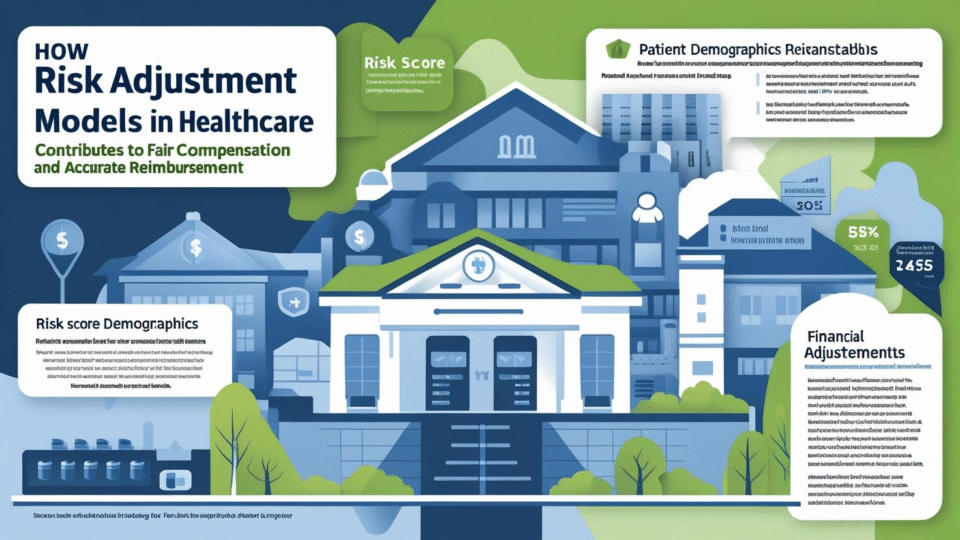
How Risk Adjustment Models in Healthcare Drive Fair Compensation and Accuracy?
Risk adjustment models in healthcare ensure that healthcare providers are paid based on the actual health risk of their patient population. These models use demographic and clinical data to calculate risk scores that influence insurer payments. CMS-HCC handles Medicare, CDPS supports Medicaid populations, and HHS-HCC balances risk in ACA markets. Version updates like V28 bring tighter coding standards. Integrating tools like a Digital Health Platform significantly improves accuracy, streamlines documentation, and ensures compliance.
Treating patients is only one aspect of modern healthcare. Another is allocating resources based on the patients’ true needs. Risk Adjustment Models in Healthcare play a central role in predicting medical expenses and ensuring fair payment distribution between payers and providers. These models are especially critical for supporting patients with multiple chronic conditions, where care is often more complex and costly.
Whether you’re working in the Medicare, Medicaid, or ACA marketplace, using precise and proven RA strategies improves cost prediction and ensures that funding reflects the population’s actual health requirements. With the right tools and processes in place, even the most complex scoring models can be used as a tactical advantage.
The first step in managing financial equity in healthcare is comprehending each patient’s particular needs. Risk adjustment models help companies in the healthcare sector predict patient costs and adjust compensation accordingly. These strategies allow doctors to serve high-risk patients with excellent treatment without having to worry about a lack of funding.
What Are Risk Adjustment Models?
Risk adjustment models estimate future healthcare expenditures based on patient demographics and clinical data. Each individual is assigned a score based on the complexity of their condition to ensure that plans are fairly compensated for treating worse people.
This prevents unfair competitive advantages and supports better resource distribution in Medicare, Medicaid, and ACA systems.
CMS-HCC: Medicare’s Risk Adjustment Model
CMS’s Hierarchical Condition Categories (HCC) model supports Medicare Advantage payment systems by converting diagnosis data into risk scores.
Key Features:
- Targets Medicare Advantage populations
- Depends on ICD-10-CM codes from encounters in person
- Uses weights to build a patient’s Risk Adjustment Factor (RAF)
What Changed in Version 28:
- Expanded categories: 86 to 115 HCCs
- Diagnostic code overhaul: 2,000+ codes revised
- Payment effect: 3.56% average decrease in risk-adjusted payments
CMS-HCC Version 28 emphasizes code precision, making accurate diagnosis capture essential for appropriate payments.
CDPS: Medicaid’s Tailored Model
The Chronic Illness and Disability Payment System (CDPS) is tailored for Medicaid and accounts for the complex needs of vulnerable populations.
Covered Populations:
- Pregnant women
- Low-income children and families
- Individuals with disabilities
- Seniors needing long-term care
CDPS+Rx: Enhancing Accuracy
Incorporating prescription data, CDPS+Rx improves predictive power and ensures a more holistic risk profile. States can further adjust the model based on local trends.
HHS-HCC: Balancing Risk in ACA Markets
The HHS-HCC model stabilizes payments across ACA health plans by factoring in current-year diagnoses and specific high-risk groups.
Key Elements:
- Covers all age groups
- Includes high-risk conditions (e.g., obstetrics)
- Supports payment equity in public exchanges
This model allows insurers to provide fair, affordable premiums regardless of member risk profiles.
Understanding Risk Score Calculation
The risk adjustment process involves several structured steps, each contributing to the accurate prediction of a patient’s healthcare costs and subsequent payment adjustments.
1. Clinical Coding
Providers capture all chronic and acute conditions using ICD-10-CM codes during face-to-face encounters. Accurate documentation ensures these diagnoses reflect the true health complexity of the patient. Each valid code should align with the MEAT (Monitored, Evaluated, Assessed, Treated) criteria to qualify for risk scoring.
2. Mapping to Risk Groups
Diagnoses are mapped to predefined risk categories such as Hierarchical Condition Categories (HCCs) or CDPS classifications. These mappings determine the conditions’ contribution to the patient’s overall risk profile.
3. Demographic Adjustments
Age, gender, dual eligibility status (Medicare and Medicaid), and disability classification are examples of non-clinical characteristics that further modify the risk score to account for social and economic factors that impact health.
4. Final Score Generation
Each diagnosis and demographic variable is weighted based on actuarial data. These weights are added to produce the total Risk Adjustment Factor (RAF), which quantifies predicted costs relative to a standardized population average.
5. Payment Impact
Risk scores directly influence plan or provider payments. A higher score means higher expected costs, which leads to larger payments. Clinicians are guaranteed the means to treat patients with more complicated medical issues because of these reimbursements. Adjustments are done annually, and their accuracy and adherence to CMS or HHS regulations are verified.
The Role of Technology in Model Accuracy
In today’s healthcare system, data must be integrated, accurate, and fast. Reliable risk adjustment tools must be used for patient data collection, processing, and analysis in order to produce accurate risk ratings and payment modifications. A reliable Digital Health Platform bridges gaps between coding, documentation, and analytics.
These platforms:
- Offer real-time diagnostic alerts
- Help providers close HCC gaps
- Ensure documentation meets MEAT standards
With tighter CMS requirements, real-time support is no longer optional; it’s critical.
Why Risk Adjustment Software Matters
Effective risk adjustment software strengthens the accuracy of documentation and reduces audit risks. It identifies overlooked codes, provides real-time suggestions, and improves claim submission.
Benefits include:
- Enhanced provider workflows
- Fewer compliance errors
- Improved data accuracy
Common Barriers in Risk Adjustment
Challenges include:
- Adapting to CMS version changes like V28
- Aligning provider documentation with model requirements
- Avoiding undercoding or miscoding
Intelligent Risk Adjustment Solutions help organizations respond quickly and stay ahead.
What to Look for in Risk Adjustment Vendors
Trusted Risk Adjustment Vendors provide platforms that go beyond coding; they offer comprehensive support.
Important capabilities:
- Support for CMS-HCC, HHS-HCC, and CDPS
- Real-time alerts and predictive analytics
- Seamless EHR integration
Strong vendors streamline processes and support providers in maintaining compliance under duress.
Final Thoughts
Risk adjustment models in healthcare fuel payment fairness and policy integrity. Relying on antiquated technologies or manual processes puts compliance and income at risk due to the increasing volume and complexity of healthcare data. CMS-HCC, CDPS+Rx, and HHS-HCC are examples of models that need to be implemented carefully, documented accurately, and updated frequently.
Searching for a platform that combines reliable documentation, real-time insights, and artificial intelligence?
Persivia CareSpace® is a comprehensive system designed for accuracy, scalability, and adherence to regulations. Supporting models like CMS-HCC, CDPS, and HHS-HCC, it transforms unstructured clinical data into codable insights, driving smarter care and stronger outcomes. Get more insights.








